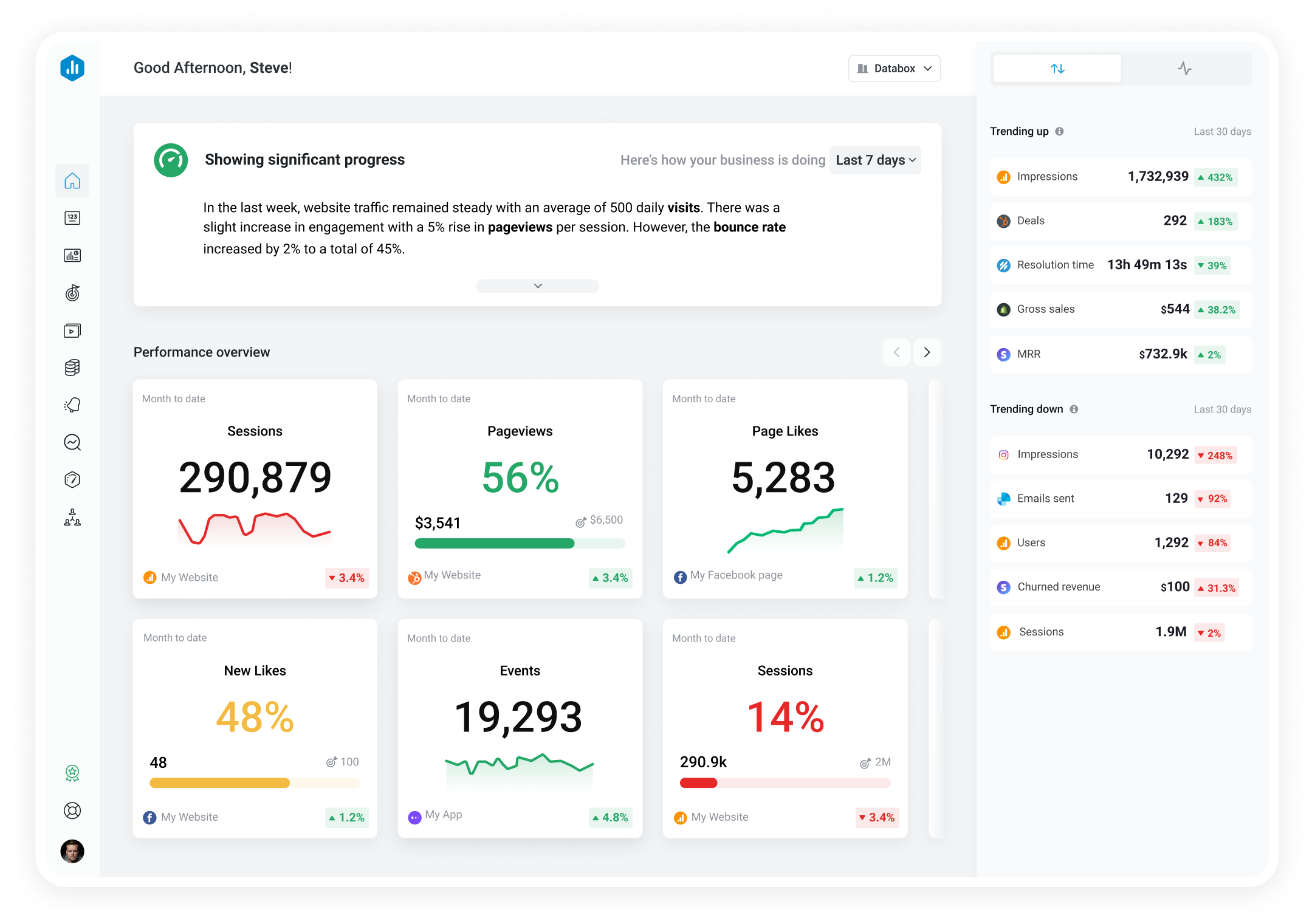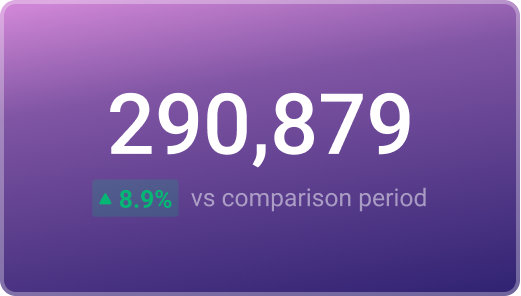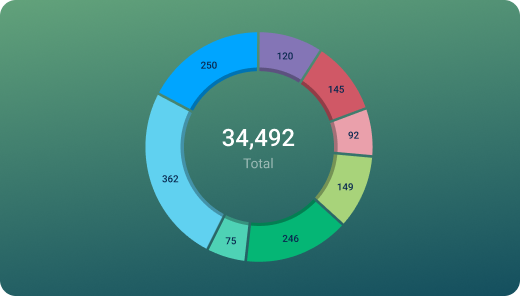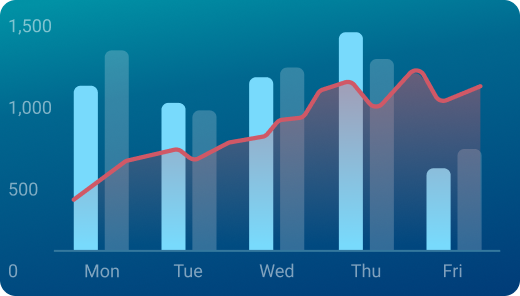Track all of your key business metrics from one screen
GET STARTED
 QuickBooks
Inventory
QuickBooks
Inventory Inventory metric refers to the amount of stock or products a business has on hand at any given time. It helps to track inventory levels and measure inventory turnover to optimize cash flow and profitability.
With Databox you can track all your metrics from various data sources in one place.
Inventory refers to the goods and materials that a business holds for the purpose of resale or production.
The specific items can include a variety of products, raw materials, work-in-progress goods, and finished goods that are either ready for sale or in the process of being manufactured.
The management of inventory is a critical aspect of any business, as it directly impacts the company’s financial health and operational efficiency. Proper inventory management ensures that the right quantity of items is available at the right time to meet customer demand, while minimizing carrying costs and the risk of stockouts.
To ensure efficient inventory management, businesses often use various inventory management techniques, including just-in-time (JIT) inventory, economic order quantity (EOQ), and ABC analysis, among others.
To calculate inventory, we need to consider the value of all the goods and materials that the business holds at a specific point in time.
The formula to calculate inventory is straightforward:
Inventory = Beginning Inventory + Purchases – Cost of Goods Sold (COGS) + Ending Inventory
Say a retail store wants to calculate its inventory for the year 2023 and saw these figures:
Now, let’s put the formula above into action:
Inventory = $50,000 (Beginning Inventory) + $150,000 (Purchases) – $120,000 (COGS) + $80,000 (Ending Inventory) Inventory = $160,000
In this example, the inventory for the retail store at the end of 2023 would be $160,000.
To optimize resources, minimize costs, and meet customer demands efficiently, businesses need effective inventory management.
With a well-managed inventory, you make sure that the right products are available at the right time, which significantly reduces the risk of stockouts or overstocking.
Depending on your specific business model, some inventory management strategies will be more efficient than others.
That said, we compiled a few approaches that could be useful for any business, regardless of its type or industry.
More resources to help you improve:

Used to show a simple Metric or to draw attention to one key number.

Used to illustrate numerical proportions through the size of the slices.

Used to show comparisons between values.
Databox is a business analytics software that allows you to track and visualize your most important metrics from any data source in one centralized platform.
To track Inventory using Databox, follow these steps:
 Goals
Goals Scorecards
Scorecards Metric Digest
Metric Digest Metric Builder
Metric Builder Data Calculations
Data Calculations Performance Screen
Performance ScreenChoosing which inventory KPIs you’re going to prioritize should be primarily based on your specific strategic goals.
Make a list of 5-8 KPIs for the beginning, and then test and refine based on your needs and operational efficiency. Tracking more KPIs might seem like a good idea, but it can actually overwhelm you and be counterproductive.
When choosing the right inventory KPIs to track, it’s also a good idea to have a chat with your warehouse manager and inventory staff to get their opinion on the most important areas.
